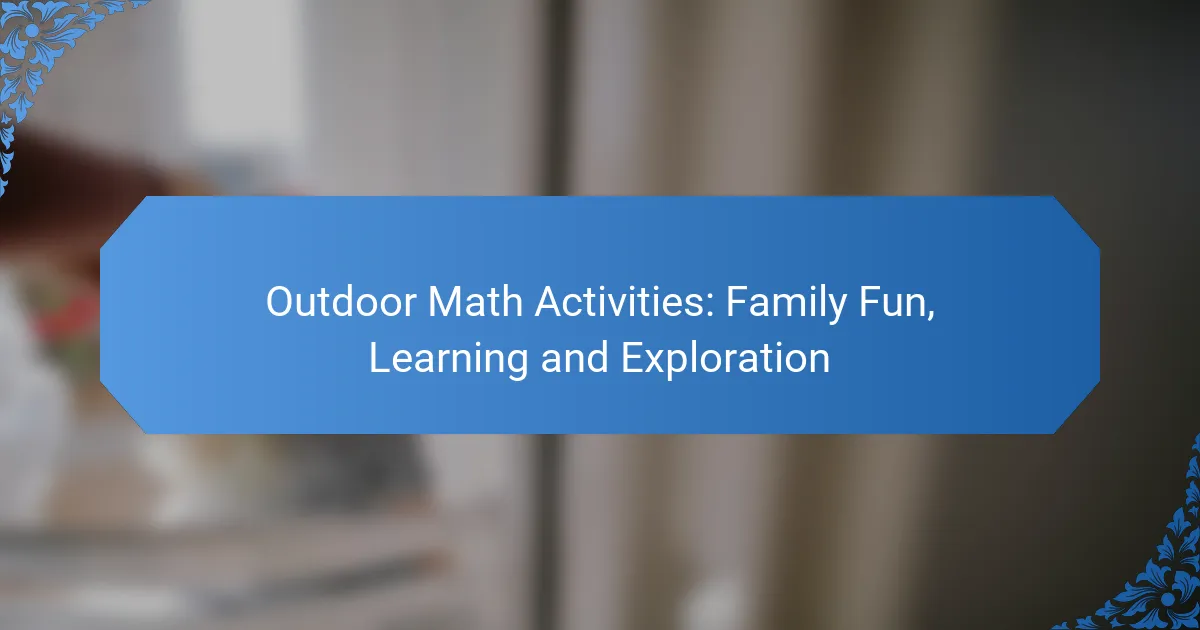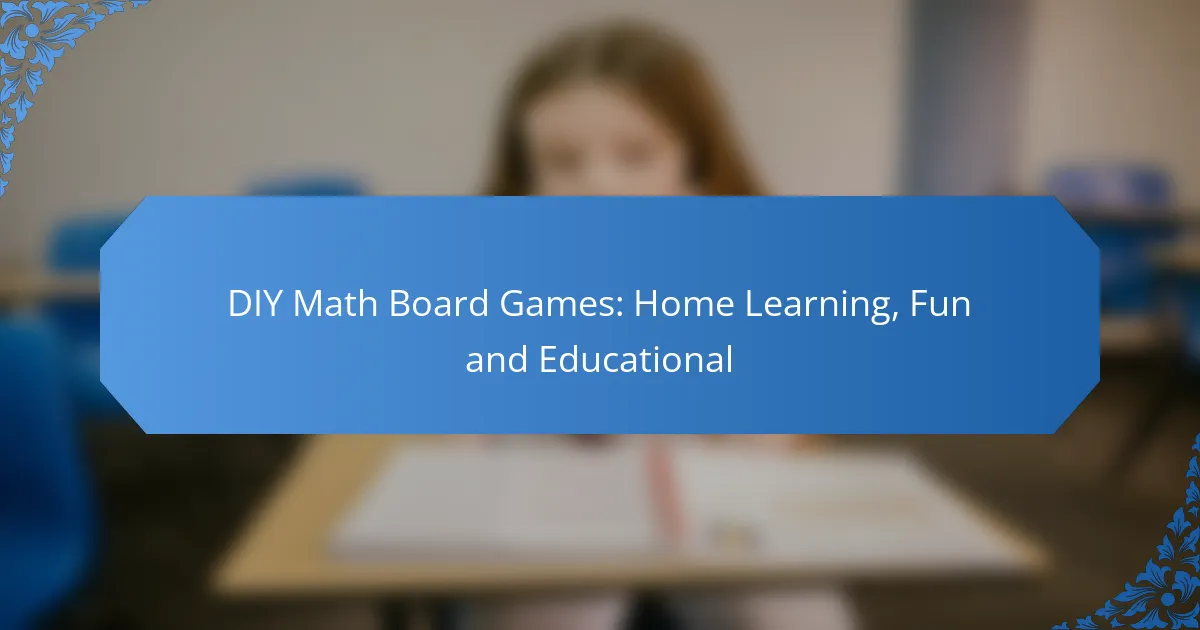Creative seasonal math projects for kids blend mathematical concepts with engaging themes, making learning both enjoyable and relevant. By incorporating seasonal elements, these activities help children connect abstract math skills to real-life experiences, fostering creativity and enhancing their understanding. Through these projects, students not only develop a deeper appreciation for math but also apply their skills in practical and fun ways.
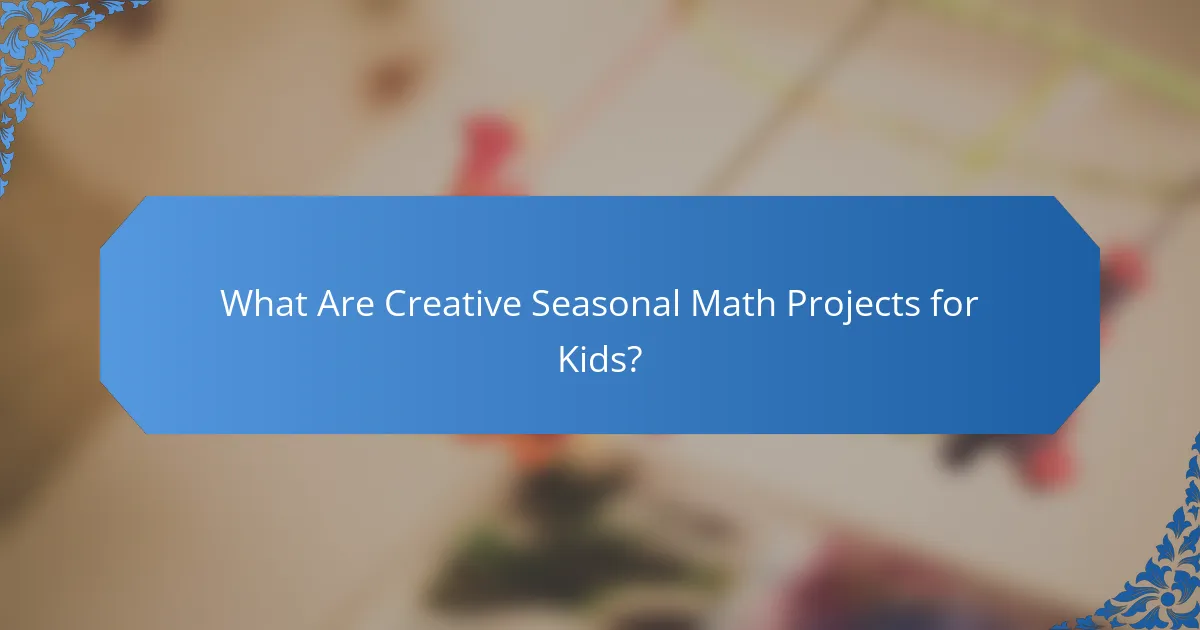
What Are Creative Seasonal Math Projects for Kids?
Creative seasonal math projects for kids are engaging activities that incorporate mathematical concepts into seasonal themes. These projects not only make learning fun but also help children apply math skills in real-world contexts, enhancing their understanding and retention.
Winter-themed Math Activities
Winter-themed math activities can include measuring snowfall, creating geometric snowflakes, or calculating the cost of holiday gifts. For example, children can design snowflakes using symmetry and learn about angles while cutting paper. Incorporating real-life scenarios, like budgeting for holiday shopping, can also enhance their practical math skills.
Consider using winter-themed games such as “Snowball Math,” where kids solve math problems to earn snowballs for a fun activity. This approach keeps them engaged while reinforcing their math knowledge.
Spring-inspired Math Challenges
Spring-inspired math challenges often revolve around nature and growth, such as measuring plant growth or calculating the area of a garden plot. Kids can track the growth of flowers or vegetables over time, applying concepts of measurement and data collection.
Another engaging project could involve creating a spring-themed scavenger hunt where children solve math puzzles to find hidden items. This interactive approach encourages teamwork and critical thinking while enjoying the outdoors.
Summer Math Games
Summer math games can be both fun and educational, focusing on activities like cooking or sports statistics. For instance, kids can measure ingredients for a summer recipe, practicing fractions and conversions in a practical context. Alternatively, they can keep score during games, applying addition and subtraction in real-time.
Outdoor math challenges, such as a “Math Olympics,” can also be effective. Set up stations with different math problems related to sports, allowing kids to compete while reinforcing their math skills in a lively environment.
Fall Math Crafts
Fall math crafts can include projects like creating leaf patterns or calculating the number of pumpkins needed for a harvest display. Children can explore concepts of symmetry and patterns while making crafts that celebrate the season.
Incorporating math into Halloween activities, such as measuring ingredients for treats or estimating the number of candies in a jar, can make learning enjoyable. These hands-on experiences help solidify math concepts in a memorable way.

How Can Seasonal Themes Enhance Learning?
Seasonal themes can significantly enhance learning by making math more relatable and engaging for children. Incorporating seasonal elements into math projects helps students connect abstract concepts to real-life experiences, fostering creativity and interest in the subject.
Engagement through Relevant Context
Using seasonal themes creates a context that resonates with students, making math more enjoyable. For example, during autumn, children can explore concepts like symmetry by creating leaf patterns or calculating the area of pumpkins. This relevance boosts motivation and encourages participation.
Teachers can enhance engagement by integrating seasonal events, such as holidays or local festivals, into math lessons. Activities like budgeting for a holiday party or measuring ingredients for seasonal recipes can provide a hands-on approach that keeps students interested.
Real-world Applications of Math
Seasonal projects allow students to see the practical applications of math in everyday life. For instance, during winter, students can analyze temperature data to understand averages and trends, or calculate the amount of snow needed for a snowman based on its dimensions.
Additionally, seasonal themes can introduce concepts like statistics through data collection on local weather patterns or sales trends during holidays. This real-world connection helps students grasp the importance of math beyond the classroom, preparing them for future challenges.

What Are the Benefits of Seasonal Math Projects?
Seasonal math projects offer numerous benefits, including enhanced engagement and practical application of mathematical concepts. These projects allow students to explore math in a fun, thematic context, fostering a deeper understanding and appreciation for the subject.
Improved Problem-solving Skills
Seasonal math projects encourage students to tackle real-world problems, enhancing their problem-solving abilities. By working on projects that relate to holidays or seasonal events, students learn to apply mathematical concepts to everyday situations, such as budgeting for a holiday party or calculating the area for a pumpkin patch.
To maximize problem-solving skills, consider using project-based learning where students collaborate on tasks. This approach not only promotes teamwork but also helps them learn different strategies to arrive at solutions.
Boosted Creativity and Critical Thinking
Engaging in seasonal math projects stimulates creativity and critical thinking. Students are often tasked with designing their own projects, which requires them to think outside the box and develop innovative solutions. For instance, creating a winter-themed math game can involve designing rules, scoring systems, and visual elements.
Encourage students to explore various mathematical concepts through creative mediums, such as art or storytelling. This not only makes math enjoyable but also helps them see the subject from different perspectives.
Increased Student Motivation
Seasonal math projects can significantly boost student motivation by making learning relevant and enjoyable. When students see how math applies to their favorite seasons or holidays, they are more likely to engage actively in their learning process.
To keep motivation high, incorporate elements that resonate with students, such as seasonal themes or collaborative challenges. Recognizing and celebrating their achievements, no matter how small, can further enhance their enthusiasm for math.
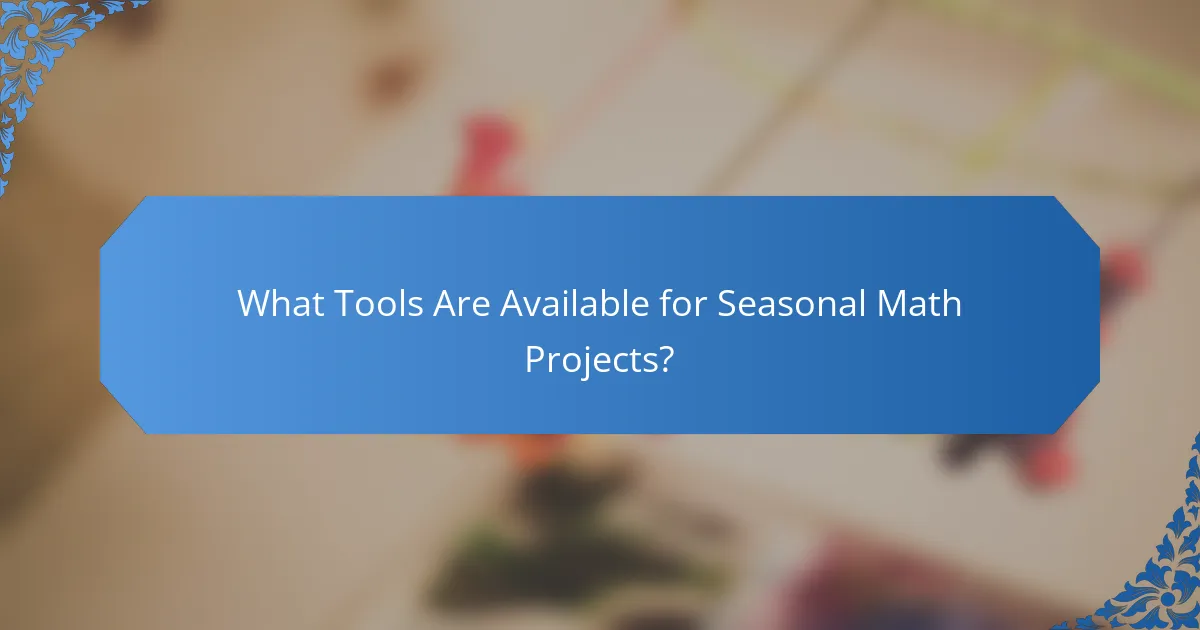
What Tools Are Available for Seasonal Math Projects?
Seasonal math projects can be enhanced with various tools that foster creativity and engagement. These tools include online platforms, hands-on manipulatives, and printable resources tailored to seasonal themes.
Online Platforms for Project Ideas
Online platforms offer a wealth of project ideas that cater to different seasons and math concepts. Websites like Teachers Pay Teachers and Education.com provide downloadable resources that educators can adapt for their classrooms. Additionally, platforms such as Pinterest showcase creative projects shared by teachers and parents, making it easy to find inspiration.
When selecting online resources, consider the age group and math skills of your students. Look for projects that align with current curriculum standards and can be easily integrated into your lesson plans.
Math Manipulatives for Hands-on Learning
Math manipulatives are physical tools that help students grasp mathematical concepts through tactile experiences. Seasonal-themed manipulatives, such as counting pumpkins in autumn or using snowflakes for geometry in winter, can make learning more relatable and enjoyable.
Common manipulatives include base ten blocks, counters, and geometric shapes. Ensure that the manipulatives you choose are age-appropriate and encourage exploration and problem-solving.
Printable Resources and Worksheets
Printable resources and worksheets are essential for reinforcing math skills during seasonal projects. These can include themed worksheets that focus on addition, subtraction, or even basic geometry, all tied to the season’s context.
Look for resources that provide clear instructions and engaging visuals. Websites like K5 Learning and Math-Aids.com offer customizable worksheets that can be tailored to different skill levels, ensuring that all students can participate effectively.

How to Integrate Seasonal Math Projects into Curriculum?
Integrating seasonal math projects into the curriculum enhances engagement and contextual learning. By connecting mathematical concepts to seasonal themes, educators can make lessons more relatable and enjoyable for students.
Aligning with Educational Standards
When integrating seasonal math projects, it’s crucial to align them with established educational standards. This ensures that the projects not only engage students but also meet learning objectives set by educational authorities.
For example, if a project focuses on geometry during the fall season, it should incorporate relevant standards from the Common Core State Standards for Mathematics, such as understanding shapes and their properties. This alignment helps maintain educational integrity while fostering creativity.
Creating a Thematic Unit Plan
A thematic unit plan centered around seasonal math projects can provide a cohesive learning experience. Start by selecting a seasonal theme, such as winter holidays or spring growth, and identify key math concepts to explore, like measurement or data analysis.
For instance, during a winter unit, students might measure the height of snowmen or analyze data on snowfall patterns. Incorporating hands-on activities, such as creating graphs or using real-world data, can deepen understanding and retention of mathematical principles.

What Are Effective Assessment Strategies for Seasonal Projects?
Effective assessment strategies for seasonal projects focus on measuring student understanding and creativity through various methods. These strategies should align with learning objectives while allowing for flexibility in evaluating diverse project outcomes.
Formative Assessment Techniques
Formative assessment techniques involve ongoing evaluations that provide feedback during the project development process. Techniques such as peer reviews, self-assessments, and checklists can help students reflect on their work and make necessary adjustments.
For example, teachers can implement regular check-in meetings where students present their progress and receive constructive feedback. This approach encourages collaboration and helps identify areas for improvement before the final submission.
Project-based Learning Evaluations
Project-based learning evaluations assess the final product and the process students used to achieve their results. These evaluations can include rubrics that outline specific criteria, such as creativity, accuracy, and presentation skills.
Incorporating elements like student reflections and presentations can provide deeper insights into their learning journey. For instance, a rubric might allocate points for originality, adherence to the seasonal theme, and the clarity of the final presentation, ensuring a comprehensive assessment of both the project and the student’s engagement.
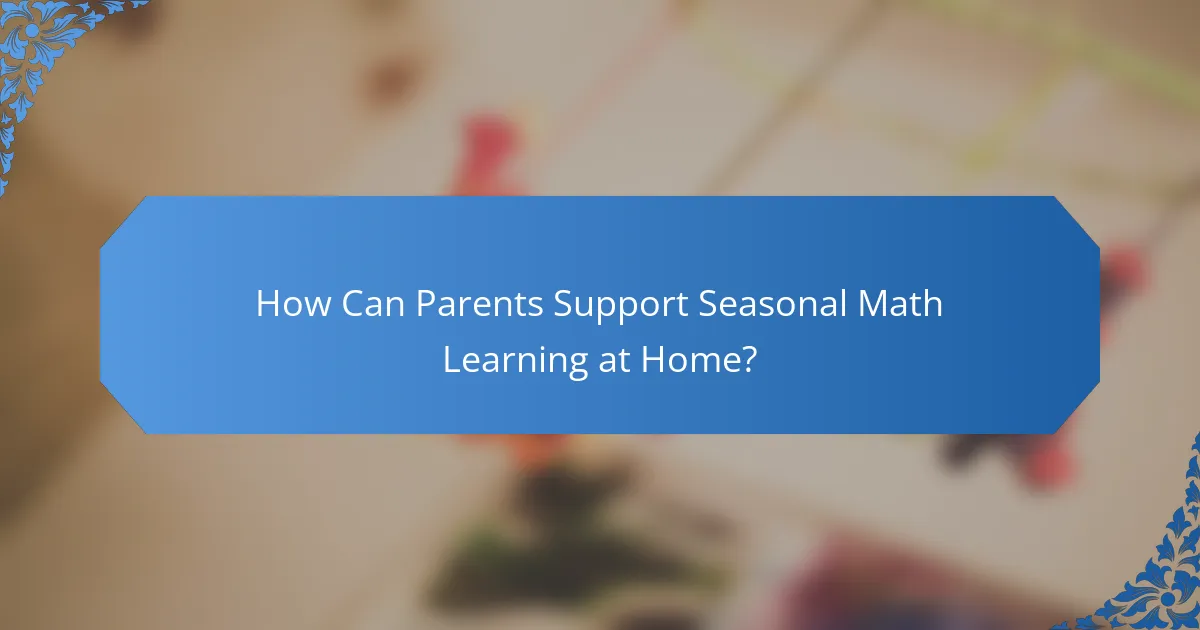
How Can Parents Support Seasonal Math Learning at Home?
Parents can enhance seasonal math learning at home by integrating math concepts into everyday activities related to the seasons. Engaging children in practical applications of math during seasonal themes fosters both understanding and creativity.
Incorporating Seasonal Themes into Math Activities
Using seasonal themes can make math more relatable and enjoyable for children. For example, during autumn, parents can involve kids in counting and sorting leaves, or measuring ingredients for pumpkin recipes. These activities not only teach math skills but also connect them to real-world experiences.
Parents can create themed worksheets or games that align with holidays or seasonal changes. For instance, a winter-themed game could involve calculating the number of snowflakes in a jar or estimating the weight of snow collected. This approach keeps learning fun and relevant.
Utilizing Everyday Situations for Math Practice
Everyday situations provide excellent opportunities for math practice. While grocery shopping, parents can ask children to calculate the total cost of items or compare prices to find the best deals. This not only reinforces addition and subtraction but also introduces budgeting concepts.
During family outings, parents can encourage kids to measure distances walked or time spent on activities. Such practical applications help children understand measurement and time management while enjoying family experiences.
Creating a Seasonal Math Learning Environment
A seasonal math learning environment can be established at home through decorations and resources that reflect the current season. For example, displaying autumn-themed math posters or using winter-themed manipulatives can create an engaging atmosphere. This visual stimulation can enhance interest and motivation.
Parents can also set up a dedicated math corner with seasonal math books, puzzles, and games. This space can serve as a hub for learning, where children feel encouraged to explore math concepts related to the seasons.

